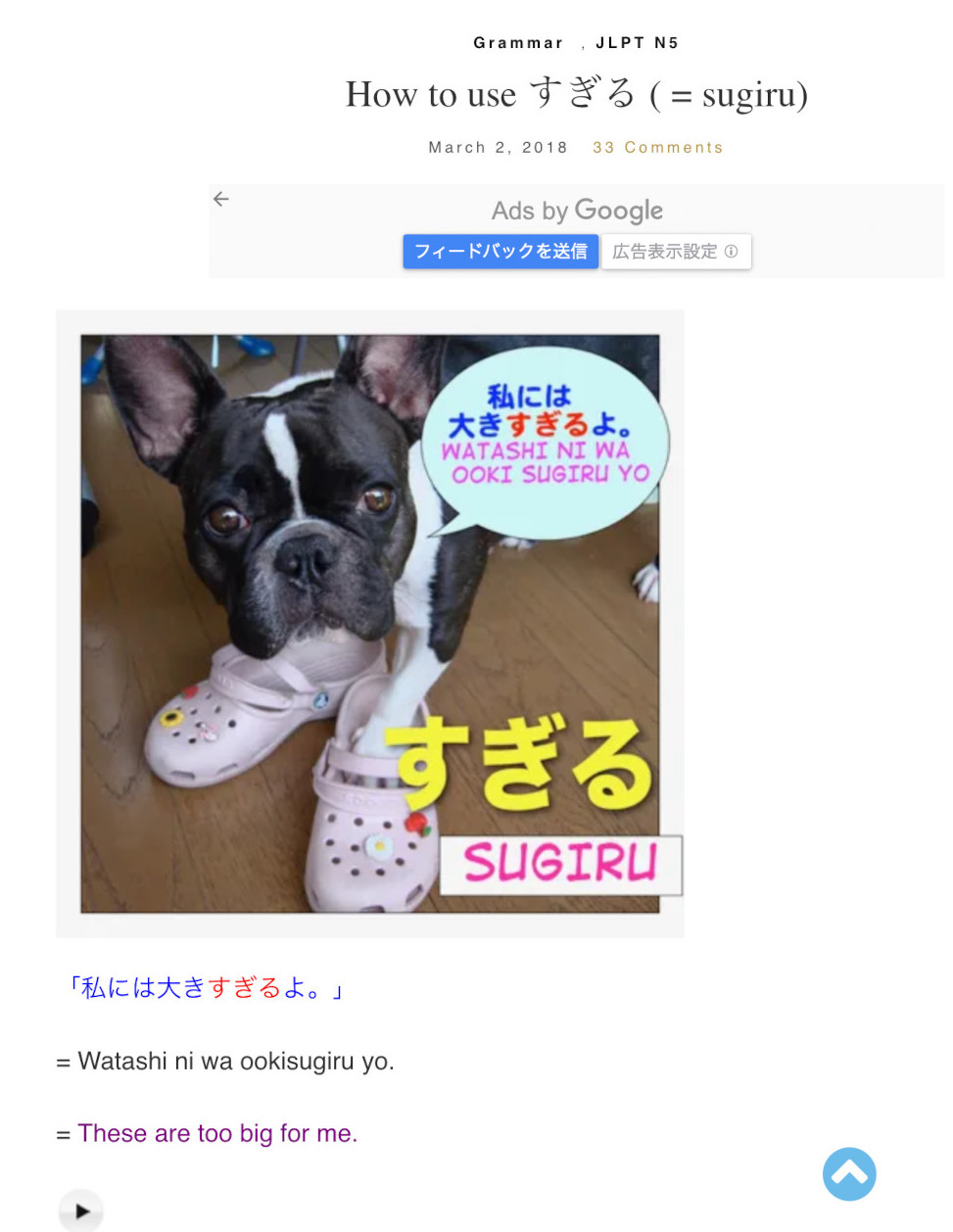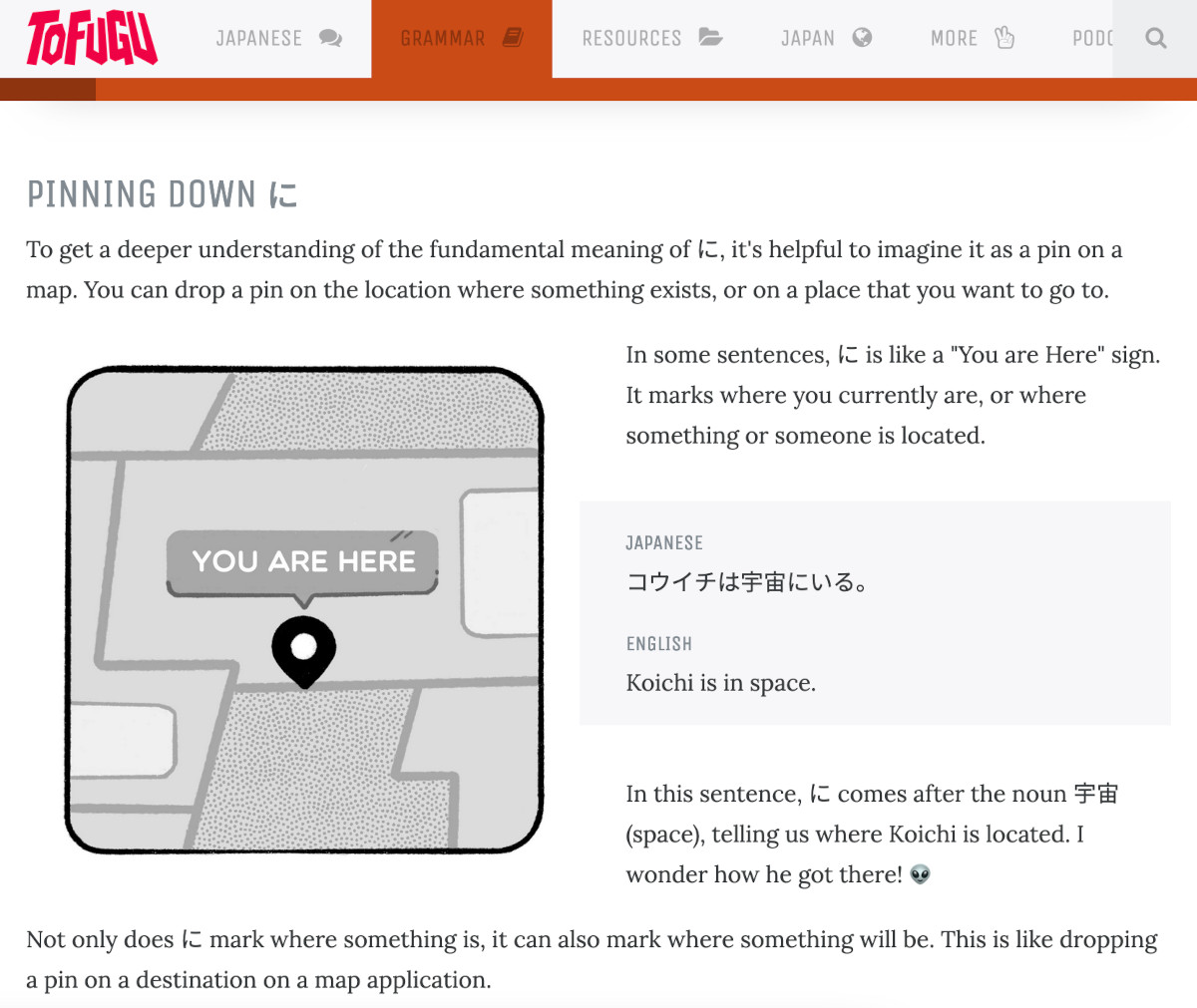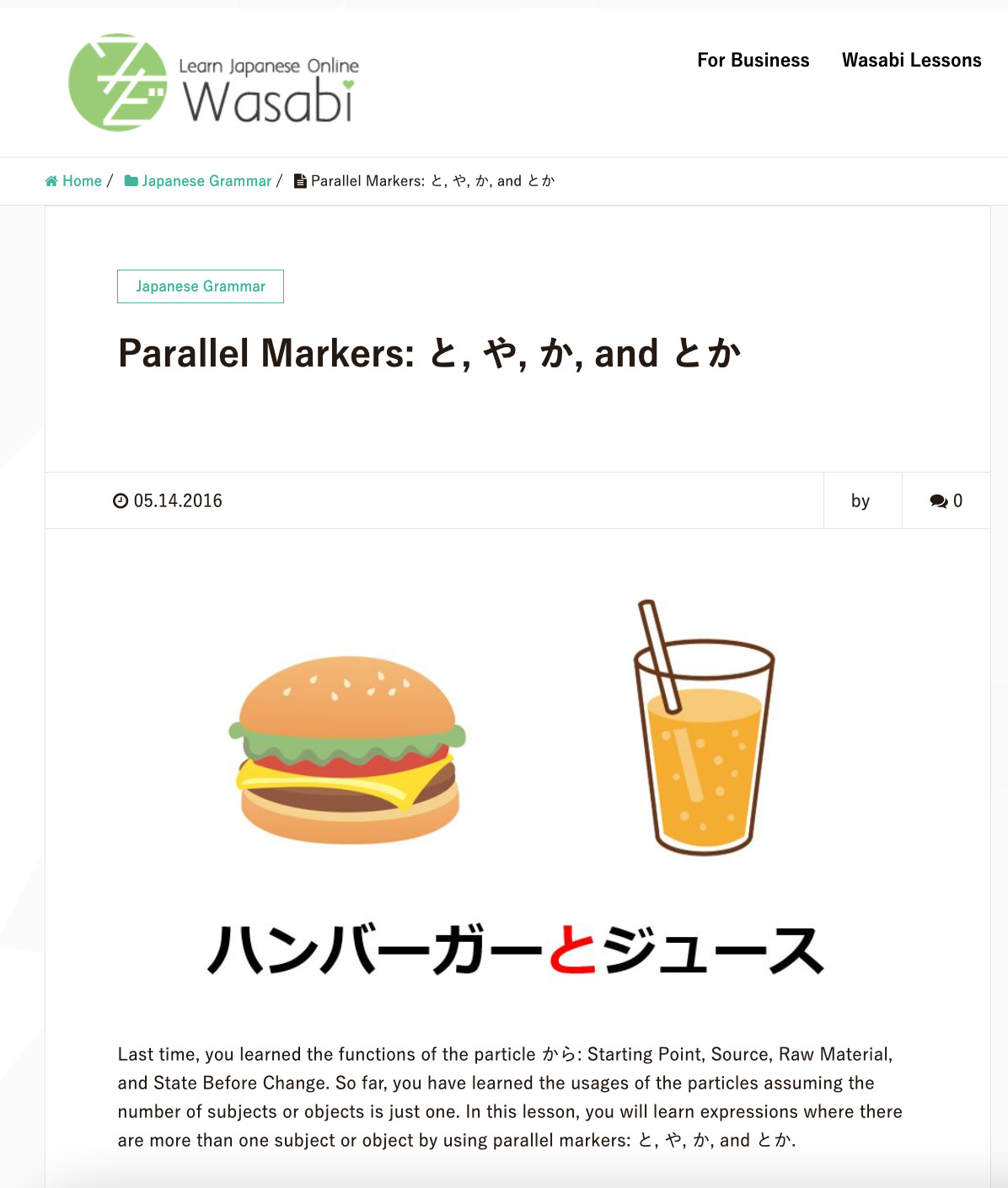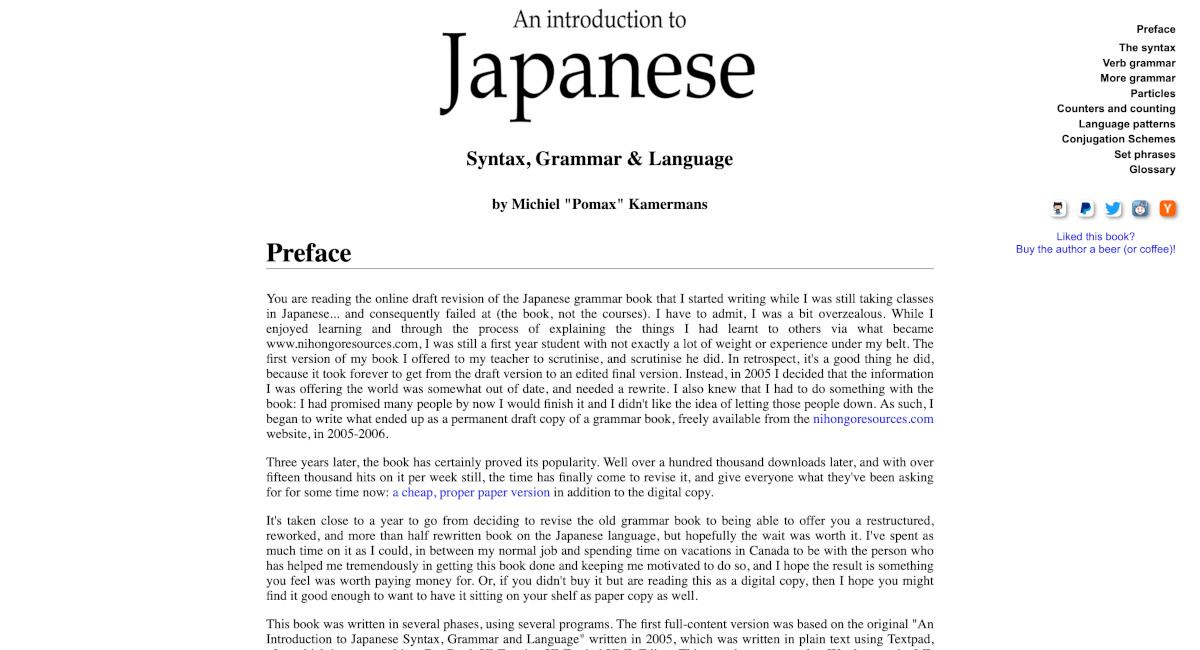Have you ever forgotten how to conjugate a verb into its て form? Or maybe you came across the particle に in your textbook and got interested in reading about all of its uses. Perhaps you are just trying to look up some grammar points that you've never heard before.
There are many different websites explaining the same grammar point, but finding the kind of explanation you were looking for can be challenging.
For situations like these, the simplest solution is turning to a free Japanese grammar guide that you can find on the Internet. When you enter a grammar point into a search engine, the results often show many different websites explaining the same grammar point. But finding the kind of explanation you were looking for through these options can be challenging — it might take you a few (or sometimes, many) clicks and some skimming-through since not every website offers sufficient explanations or enough example sentences to make it finally click for you.
If you've ever wondered which online grammar guides are trust-worthy — you came to the right place! In this article, I have put together a list of online grammar guides that I think are pretty neat. These guides will come in handy for Japanese learners of any level or of any study style, whether you're studying Japanese formally in the classroom or if you're just self-studying. I've got you covered!
- What is an Online Grammar Guide?
- Tae Kim's Guide to Learning Japanese
- Maggie Sensei
- Tofugu: Japanese Grammar
- Wasabi: Japanese Grammar
- An Introduction to Japanese Syntax, Grammar & Language by Michiel "Pomax" Kamermans
- Find Your Go-Tos And Bookmark 'Em!
What is an Online Grammar Guide?
Let's first define what I mean by online grammar guide. For this article, it is any reference database containing Japanese grammar points and patterns along with explanations, example usages, and notes. While some have a recommended learning order so that they can be used as a textbook replacement, I am not considering this as an essential factor for this article. And of course, the "online" portion means that they are stored and accessed via an Internet browser. All of the grammar guides presented in this article are free.
So, without further ado, let's get into each grammar guide.
Tae Kim's Guide to Learning Japanese

If you search for free Japanese resources online, you're bound to run into Tae Kim's A Guide to Japanese Grammar on his website Tae Kim's Guide to Learning Japanese. It's fairly complete and does a decent job of explaining grammar concepts in a way anyone can understand. That said, Tae Kim's guide may not be ideal for curious learners who are seeking more in-depth explanations. The grammar explanations tend to be quite simple, often providing a one-to-one direct translation. That might be great as a starter, but if you wish to deepen your understanding on a specific grammar point, you may need to consult other grammar resources.
Be advised there are two sections to his site: The Grammar Guide and The Complete Guide. The Complete Guide covers most of the same material as The Grammar Guide, but with extras about the written language. Both guides are organized in a textbook-like fashion; you can absolutely substitute a beginner textbook for this grammar guide if you wanted. Lessons build on one another, and should cover the foundation of Japanese grammar.
Whichever of these two guides you use, they are great considering the amount of information you can learn, and they're absolutely free.
Maggie Sensei

Maggie Sensei is a Japanese grammar guide site designed to teach Japanese as it is used in everyday life. The site's mascot is a dog named Maggie (who, sadly, has passed away). Lessons are brief and provide easy-to-understand explanations of various grammar points. And there are a lot of lessons. They are categorized using a number of handy tags such as, "JLPT N3" and "Formal Japanese" and "Emergency."
Maggie Sensei does a great job of explaining the various usages of grammar points and providing loads of example sentences to drive home each possible situation. Because Maggie Sensei covers so many different grammar patterns, if you couldn't find information about a particular grammar usage elsewhere, Maggie Sensei might be the place to go.
The site uses pictures of readers' pets and turns them into comics that demonstrate the grammar point in question. The site’s style is very kawaii, but it lacks formatting that would make reading articles a little easier. All examples are written three times: first as you would write it in Japanese normally, second in romaji, and third with the English translation. The site puts out articles regularly, and has been doing so since 2008.
Articles are not organized in any particular order; you will have to search for a specific grammar pattern if you would like to find out what Maggie says about it. Unlike Tae Kim's guide to Japanese, Maggie Sensei's website is set up less like a textbook and more like a blog.
Tofugu: Japanese Grammar
Next up is the Japanese Grammar section of the Tofugu blog (which you are currently reading this article on)!

Tofugu's Japanese Grammar lets you look up specific Japanese grammar points. You can either look for grammar constructions by selecting related categories such as "Verb Conjugation" and "い-Adjectives," or use a search bar that allows you to find constructions you are interested in.
Individual grammar entries provide an in-depth explanation, plenty of example sentences, warnings regarding common mistakes, and references. What makes Tofugu's grammar guide stand out is that it often conceptualizes grammar points. For example, the particle に is taught as something like a pin on a map. And as you read on, you get to learn how the に particle works like a pin — being used to pinpoint a location, a spot that something gets attached to, or a point in time. With this approach, it is easy to understand and make connections with different uses of a grammar point that are seemingly unrelated to each other, rather than trying to cram everything into your brain.

On each page, the content is organized into "The Basics" and "Beyond The Basics" parts, which makes it easy to know what's essential and what's advanced information. It also provides patterns of usage, and then gives a number of different contexts in which one could use each pattern. There are plenty of example sentences, and the content is quite understandable overall.
While there are currently not as many constructions as in other grammar guides, Tofugu's Japanese Grammar is continuously being updated and added to.
Wasabi: Japanese Grammar

Wasabi is a Japanese language instruction company located in Shibuya, Tokyo, Japan. While they offer paid Japanese lessons and instruction, their website also has a grammar guide with explanations on a number of useful Japanese grammar points. Compared to other online grammar reference guides, Wasabi has a strong tendency to combine multiple grammar points that have similar meanings, functions, or uses so that you can learn about them in comparisons. This can be seen in pages such as "Parallel Markers: と, や, か, and とか" or "Numbers and Amounts: も, だけ, しか, ばかり, and すぎる".
The explanations are concise and come with some illustrations to demonstrate usage. However, the description of each grammar point tends to be very brief, and there are usually only a few example sentences. Additionally, some explanations may not always communicate the nuance behind a pattern. While it can be a great resource as a quick reference, if you are looking for more in-depth explanations and examples, you may want to consult other grammar guides as well.
Lessons are organized by three levels: "Basic Grammar", "Essential Grammar", and "Advanced Grammar". However, some of the grammar point categorizations might be debated. For instance, a lesson entitled, "How to Express Doubts: かな, かしら, だろうか, and ではないか" is found in the "Advanced Grammar" section when most textbooks would teach such points at an intermediate level.
Additionally, this grammar guide does not contain as many entries as other popular online grammar references. Still, it does a good job of explaining many common patterns; I just wouldn't use it as a textbook replacement.
An Introduction to Japanese Syntax, Grammar & Language by Michiel "Pomax" Kamermans

An introduction to Japanese Syntax, Grammar & Language is a large, online introduction to Japanese as a whole. While the title says "introduction," this is really more than just a simple introduction. The author goes into much detail about Japanese grammar, words, particles, sentence patterns, conjugations, phrases, and more. It seems like there was also a paperback version available on Amazon, though it unfortunately says "out-of-print" as of the time of this write-up.
As it covers basic concepts of Japanese grammar in a single webpage rather than in a database format, searching for specific grammar points can be a little bit of a challenge. However, since this site truly starts from the beginning of learning Japanese, it could be used as an online Japanese textbook. It must be noted, however, that, like many of the other potential textbook-replacer grammar guides, it does not contain exercises or self-assessments.
This is a great resource for beginners to deep-dive into the nitty-gritty of Japanese grammar. For that reason, compared to other online grammar guides, it might not cover as many idiomatic grammar patterns, especially intermediate to advanced-level expressions.
Find Your Go-Tos And Bookmark 'Em!
When you do online research about a specific grammar point, a number of grammar guides probably pop up in your search result. However, as I've discussed in this article, many websites have their own approach, strengths, and weaknesses. Hopefully, in this article, you could find a few options for go-to grammar references or back-ups for whenever your search didn't quite work out. Simply as a grammar reference, I think that beginner-level learners (particularly self-studiers) may find Tofugu's Japanese Grammar and Maggie Sensei's grammar articles particularly helpful because of the thorough explanations and abundance of examples.
Also, bear in mind Japanese grammar is huge. It's almost impossible for an online grammar reference site to cover every single piece of information that a learner might be looking for. Especially as you become an intermediate or advanced learner, you may need to check several grammar guides for grammar constructions that are rare or obscure. This is where having a list like this comes in handy — be sure to bookmark them and have them in your pocket!
